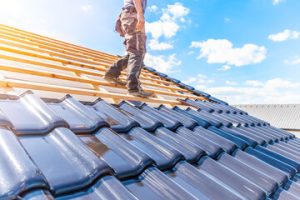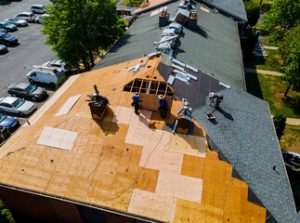Whether your roof needs repair, replacement, or just maintenance, you need a professional roofing contractor. Look for one with experience, positive reviews and manufacturer certifications.

Bears Valley Roofing Contractor provides a clear, detailed estimate covering labor costs and materials. They also explain any additional costs that may arise and provide a timeline for the project.
Roofing is a complex and challenging field that requires specialized knowledge and expertise. Professional roofers have years of experience and undergo extensive training to learn the latest technologies in their field. They follow industry standards and use quality materials to deliver high-quality results. They are also knowledgeable about local building codes and manufacturer guidelines.
A professional roofing contractor is committed to providing superior customer service and will always work with their clients to meet their needs. They communicate clearly with their clients and provide regular updates throughout the project. They will also be transparent about any additional costs that may arise during the project.
Before hiring a contractor, ask for references and reviews from past customers. These can give you an idea of the contractor’s reliability and reputation. Choosing a contractor with positive customer feedback will ensure a smooth and satisfying project.
Look for a roofing contractor that is RCAT licensed and CTRCA vetted. These credentials indicate that the contractor is a responsible and reputable business owner who follows best practices in the roofing industry. They will also be insured and committed to safety, which is essential in this dangerous industry. Be wary of contractors who refuse to provide proof of insurance or workers’ compensation.
A good roofing contractor will pay attention to detail and will complete the job correctly the first time around. They will also be aware of any local building codes and manufacturer guidelines that apply to the roofing system they are installing. This will help prevent problems down the road and protect the health and safety of the household. Professional roofers are also experienced problem-solvers and will be able to identify issues that may require more extensive repairs.
Experience
When choosing a contractor, look for someone who has experience installing or repairing your specific roofing type. Ask about their previous projects and review customer feedback to determine if they were satisfied with the results. Experienced contractors are more efficient and will likely complete the project faster without sacrificing quality. They also know how to handle any problems that may arise during the job and can solve them quickly.
Professionalism in communication is another trait to look for in a contractor. A good contractor will communicate clearly throughout the estimation process and keep you informed as the project progresses. They will also be transparent about any additional costs that may arise during the project and work with you to find solutions that fit your budget.
Roofing work is dangerous, so be sure to hire a contractor who prioritizes safety and adheres to industry regulations. Ask about their safety protocols and training programs to ensure that you and your property are protected during the project. Also, check whether they have liability insurance and workers’ compensation insurance, as these will cover any property damage or medical expenses incurred by their employees during the project.
Manufacturer certification isn’t just a marketing gimmick; it is a sign of high-quality workmanship. Those who have earned a manufacturer’s certification have gone through extensive training and numerous roof installs and repairs. This demonstrates that they have the knowledge and skills necessary to provide high-quality workmanship and uphold the manufacturer’s warranty.
Lastly, it is important to choose a local contractor. This will help minimize any potential issues during the project, as they are familiar with local building codes and regulations. Additionally, they will be more easily accessible for any follow-up services or warranty claims. Moreover, local contractors are more familiar with the challenges that can affect roofing in your area. This means that they can offer better advice and recommendations on the type of roofing to use. This will ensure that your roofing is durable and lasts for a long time.
License
Roofing contractors install, repair or replace roofs. They work with materials that seal, waterproof and weatherproof structures. Those include asphaltum, pitch, tar, felt fabric, shingles, slate, cedar shakes, metal roofing systems and other roof coverings. Those working on roofs are expected to adhere to local and state codes, rules, and regulations in their work.
Those who are licensed are held to higher standards of professionalism, including meeting specific exam and experience requirements before being granted a license. This ensures the contractor has the necessary skill set to safely and effectively perform roofing tasks. It also allows clients to feel confident in their choice of roofing contractor and to be sure they are dealing with a legitimate professional.
Licensing requirements vary by state. Some, such as Florida and California, maintain rigorous statewide licensing systems with formal exams and background checks, while others have more basic registration requirements. Regardless of state regulations, it is always wise for a roofing contractor to be licensed where possible.
To obtain a roofer’s license, they must pass one or more tests that cover general trade knowledge, roofing techniques, safety practices and local building standards. Many states also require that applicants complete a training program or apprenticeship, which can often count towards their licensing requirements.
Having a roofing contractor’s license opens doors to larger projects and premium clients. It also allows a roofing contractor to offer financing options, which can make the services more affordable for homeowners. It’s also important to have a strong time management system in place, such as Invoice Fly, to track your work hours and meet state-specific licensing requirements. This will help you avoid late fees and penalties. Getting a license takes time and effort, but it’s worth it in the long run. It shows that you take your career seriously and are committed to the highest standards of professionalism. It also makes you more competitive in a crowded market. For more information about becoming a licensed roofer, contact your state’s roofing association or visit its website. There, you can find out more about the specific requirements for your area.
Insurance
A roofing contractor should have a variety of insurance coverage to protect their business. They should have general liability insurance, workers’ compensation insurance and commercial auto insurance. Additionally, they should have a builder’s risk insurance policy to cover the construction site and all tools, equipment and materials from the start of the project until its completion. This type of insurance offers protection against damage caused by fire, theft, or weather events. It’s also a good idea for roofing contractors to carry inland marine insurance that covers all of their tools and equipment while they’re in transit or stored off-site. This insurance protects against losses and helps to keep a roofing company’s operations running smoothly.
Another important type of insurance for roofing contractors is professional liability insurance. This policy protects the roofing contractor against claims made by clients or customers for negligence and misrepresentation. It can also cover the cost of repairs or legal fees if a claim is made against them for errors in their work. Roofing contractors should also have pollution liability insurance to protect them from environmental damage. For example, if a roofing contractor leaks toxic chemicals into the soil or water supply, they could face costly cleanup costs. Mold related claims are also common and can be very expensive.
Lastly, roofing contractors should have a workers’ compensation insurance to protect themselves and their employees. If a worker is injured while working on a job, this coverage pays their medical bills and lost wages. It’s also a legal requirement in most states. Besides protecting the roofing contractor from lawsuits, this type of insurance shows the employer’s commitment to employee safety and well-being.
Roofing contractors should also have general liability insurance, which provides third-party bodily injury and property damage coverage. This coverage is indispensable, where damages can quickly add up. This type of insurance can also include personal and advertising injury coverage, which protects against claims for slander or libel. It can also include business interruption coverage, which reimburses the roofing contractor for lost revenue if their business is interrupted due to an insured event.

